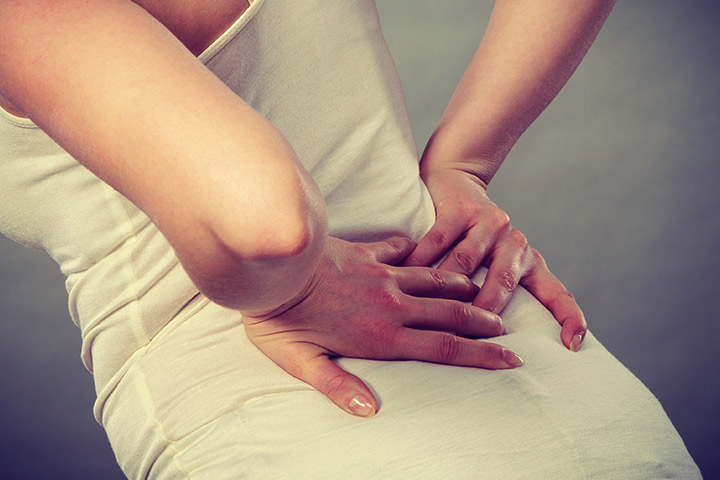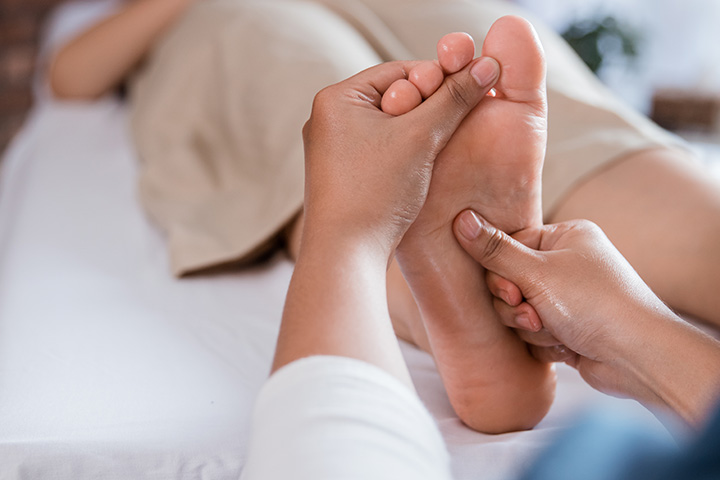
Image: Shutterstock
Congratulations if you’ve just given birth to your little angel! You might obviously be on top of the moon right now, with your baby in your arms. Of course, those nine months wouldn’t have been easy at all. Not to forget the excruciating childbirth. And then, things just don’t end there. There will always be some sort of post-childbirth issues that you can expect depending on the kind of delivery you’ve had – either normal delivery or a cesarean section. As most women hope for a normal delivery, a last-minute life-saving C-section leaves them unprepared to deal with its after-effects. So, here we’ll discuss certain effects that a C-section leaves behind, if they are normal, and how to deal with them.
Post-Surgery Back Pain
During a C-section surgery, you might be given anesthesia as pain relief. This is typically either epidural, spinal, or general anesthesia depending on the nature of the complication. It is the spinal anesthesia, however, that may pose a risk of back pain according to a study conducted in 2009. The study involved around 857 Asian women who underwent elective C-section surgery under spinal anesthesia. It was found that nearly 40% of these women were at risk of developing back pain (1). Therefore, if you are experiencing back pain after your surgery, it is pretty normal.
This pain generally eases after the effects of the anesthesia fade, or even with lying or sitting down. However, depending on how severe the pain is, you can discuss with your doctor regarding pain relief options, especially if you are breastfeeding.
Postpartum Swelling In Legs And Face
Many women experience swelling in their legs, around the area of the incision, or even their face after a C-section. This is known as postpartum edema. Throughout your pregnancy, your body starts retaining extra water to support your baby. And, this water gradually recedes from your body through urination and sweating. However, at times, this excess amount of water gets retained in your body even after cesarean delivery. The fact that you’ll be unable to frequently urinate due to the incisional pain also does not work in your favor. As a result, the extra weight of the water build-up in your body exerts pressure on your nerves and muscles leading to swelling of your face, legs, ankles, and feet.
You can address this swelling naturally by elevating your legs while sleeping, soaking your feet in warm water, drinking plenty of fluids, and avoiding salt. Postpartum massage for pain relief and swelling is highly recommended (2).
Abdominal Pain And Soreness
Cesarean surgery requires a horizontal or vertical incision to be made in your abdomen, generally close to the pubic area, by your doctor. The doctor will then make these incisions layer by layer through the fatty tissues, connective tissues, and abdominal muscles to finally access the abdominal cavity. From here, the doc will then proceed to make an incision in the uterus to extract your baby, thereby completing the delivery process (3). Soon after, all the layers are then stitched back. This type of complex surgery is bound to leave you with some pain and soreness in your abdominal area, which is quite normal.
To help you with this pain, do not try to lift anything heavy for a few weeks. Whenever you have the urge to cough, sneeze, or laugh, support your stomach with your hands to protect it from the jerks. You can also apply mild heat by usin g a heating pad on low setting. Check with your doctor if you can use over-the-counter pain relief medications, some of which are safe even if you are breastfeeding (4).
Childbirth is definitely not a walk in the park. And recovering from a C-section surgery isn’t going to be easy as well. Of course, you’ll feel that it was all worth it. But do not forget that you’ve just given birth to a human being. So, go easy on yourself, keep yourself well-hydrated, and don’t forget to buzz your doctor even if you have the slightest of doubts. You’ll soon be up and about on your feet again. Here’s wishing you a speedy recovery!
















